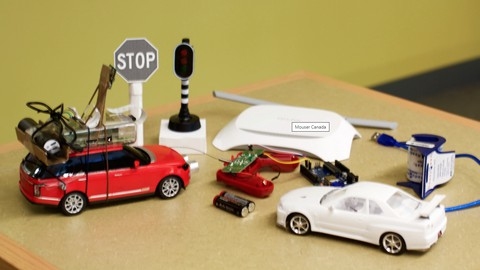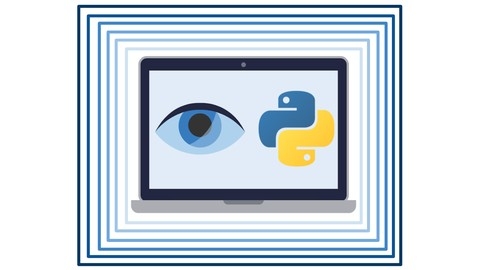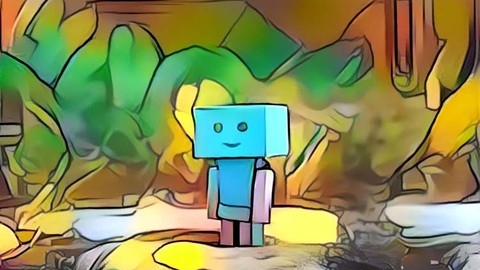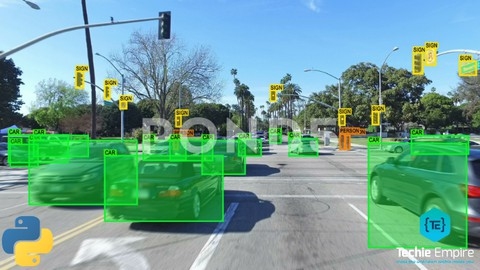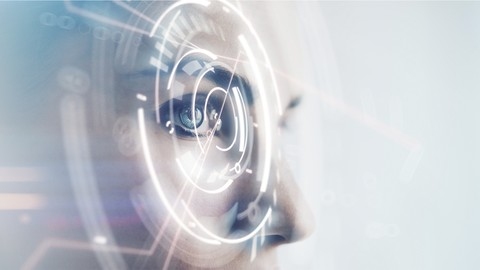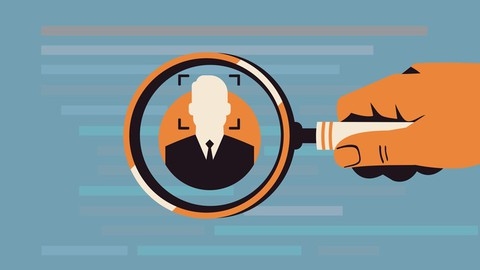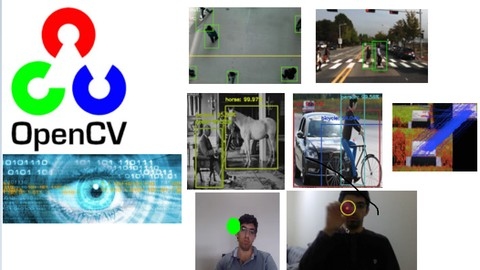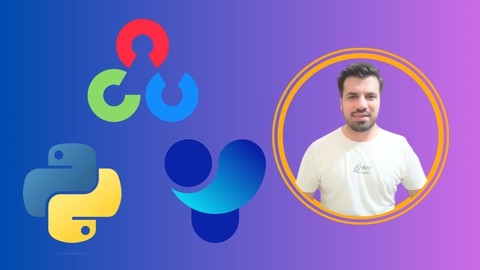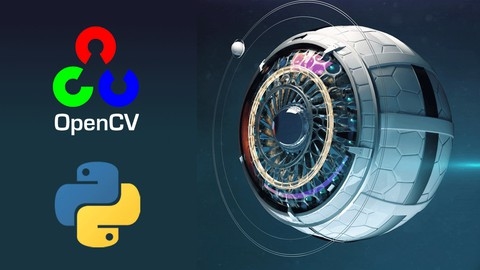OpenCV (Open Source Computer Vision Library) is a powerful tool for computer vision tasks like image processing, object detection, and tracking.
It’s used in various applications, from self-driving cars to medical imaging.
Mastering OpenCV can open doors to exciting opportunities in fields like machine learning, robotics, and artificial intelligence.
Finding the right OpenCV course on Udemy can be overwhelming with so many options available.
You’re looking for a program that’s comprehensive, engaging, and taught by experts, but also fits your learning style and goals.
You want to make sure you get the most value for your investment and learn skills you can actually use.
For the best OpenCV course overall on Udemy, we recommend Python for Computer Vision with OpenCV and Deep Learning.
This course covers everything from the fundamentals of image processing with NumPy and Jupyter Notebooks to advanced concepts like object detection and deep learning with CNNs.
It’s packed with practical projects and real-world applications, making it a great choice for beginners and experienced learners alike.
This is just the tip of the iceberg when it comes to great OpenCV courses on Udemy.
Keep reading to discover more options, tailored to specific learning levels, areas of interest, and even career goals.
Python for Computer Vision with OpenCV and Deep Learning
The course starts by covering the fundamentals of working with images using NumPy and Jupyter Notebooks.
You’ll learn how to open, display, and draw on images programmatically.
From there, it dives into using the powerful OpenCV library for image processing tasks like blending, thresholding, blurring, and calculating gradients and histograms.
This gives you a solid grounding in core computer vision techniques.
The course then moves into video basics, teaching you how to connect to a camera feed and process video frames.
You’ll learn object detection algorithms like template matching, corner detection, edge detection, and contour finding.
Next up is object tracking, covering optical flow methods as well as algorithms like MeanShift and CamShift.
You’ll get experience with OpenCV’s tracking APIs.
The real highlight is the deep learning section.
It covers machine learning fundamentals, neural networks, backpropagation, and cost functions.
You’ll use Keras to build convolutional neural networks on datasets like MNIST and CIFAR-10.
The course even guides you through training a CNN on your own custom image data.
Finally, you’ll apply everything you’ve learned in a capstone project involving object segmentation and counting.
There’s also a bonus section covering the powerful YOLO object detection algorithm.
Deep Learning Computer Vision� CNN, OpenCV, YOLO, SSD & GANs
This course provides a comprehensive introduction to computer vision and deep learning, covering essential topics like image processing with OpenCV, neural networks, convolutional neural networks (CNNs), and advanced techniques such as object detection (YOLO, SSD), image segmentation (U-Net), and generative adversarial networks (GANs).
It starts with the fundamentals, explaining what computer vision is, the challenges involved, and how deep learning can help overcome them.
You’ll learn about image representation, OpenCV basics, and its limitations.
From there, it dives into neural networks, covering forward propagation, activation functions, backpropagation, and gradient descent – the core concepts behind training deep learning models.
Once you understand the theoretical foundations, you’ll build your first CNN models in Python using Keras.
The course guides you through loading datasets, preprocessing data, building CNN architectures, training models, and evaluating their performance.
You’ll also learn techniques like data augmentation, transfer learning, and visualizing what your CNNs have learned.
The course then explores advanced CNN architectures like VGGNet, ResNet, and InceptionNet, pretrained on the massive ImageNet dataset.
You’ll learn how to leverage these powerful models for your own applications through transfer learning and fine-tuning.
Object detection is a major focus, covering techniques from traditional sliding window approaches to modern deep learning methods like YOLO, SSD, and Faster R-CNN.
You’ll use the TensorFlow Object Detection API and Darkflow to train custom object detectors.
Other highlights include image segmentation with U-Net (useful for medical imaging), facial analysis (emotion, age, gender recognition), generative models like DeepDream and style transfer, and an introduction to generative adversarial networks (GANs) for tasks like simulating aging faces.
The course also covers practical aspects like setting up deep learning environments (virtual machines, cloud GPUs), finding datasets, attending conferences, and exploring alternative frameworks like PyTorch and MXNet.
You’ll even build a computer vision API and web app using Flask and deploy it on AWS.
Build Your own Self Driving Car | Deep Learning, OpenCV, C++
You will start by learning the fundamentals of machine learning, which is essential for understanding self-driving car technology.
Next, you will dive into the hands-on part of the course, where you will build the hardware for your self-driving car.
This includes assembling the robot chassis, setting up the Arduino UNO as the slave device, and configuring the Raspberry Pi 3 B+ as the master device.
You will learn how to flash the Raspbian OS on the Raspberry Pi, connect it to your personal computer via Ethernet, WiFi, or VNC Viewer, and even use a pre-made SD card backup.
Once the hardware is set up, you will install OpenCV4 on the Raspberry Pi and learn how to use it with C++.
This includes setting up the libraries, testing programs in the Geany programming editor, and configuring the camera for the Raspberry Pi.
You will write C++ code to capture images and videos, calculate frames per second (FPS), and perform image processing tasks like converting image signatures, creating regions of interest, perspective transformation (bird eye view), threshold operations, and canny edge detection.
The course will also cover advanced topics like finding lanes from the track, working with histograms and vectors, iterators and pointers, and calibration.
You will learn how to establish communication between the master and slave devices, program the Arduino Uno, and troubleshoot hardware and software issues.
Finally, you will implement lane end and U-turn functionality on both the main and slave devices, and explore machine learning techniques for self-driving cars.
The course even includes a bonus course on machine learning.
Object Detection Web App with TensorFlow, OpenCV and Flask
The course starts with an introduction, giving you an overview of what you’ll learn.
You’ll also get to know the instructor’s background and expertise.
Next, you’ll set up your environment by installing the required packages and libraries.
The course provides resources and a folder structure to help you get started smoothly.
Once you have everything set up, the real fun begins!
You’ll dive into an Object Detection project, learning how to import the necessary packages and data.
The course will guide you through the detection process, teaching you how to detect objects in images using OpenCV and TensorFlow.
But that’s not just it - you’ll also learn how to create a web app using Flask.
You’ll implement routing and image upload functionality, allowing users to upload images for object detection.
The course will show you how to bind the object detection model with the web app, ensuring a seamless integration.
The implementation and output sections will walk you through the final stages, helping you understand how to display the detected objects on the web app.
And as a bonus, you’ll even learn how to extend the project to work with YouTube videos!
You’ll gain valuable skills applicable to real-world projects.
Object Tracking using Python and OpenCV
The course starts with an introduction to object tracking and how it differs from object detection.
You’ll get an intuitive understanding of various object tracking algorithms like Boosting, MIL, KCF, CSRT, MedianFlow, TLD, MOSSE, and Goturn.
After installing Anaconda and PyCharm, you’ll dive into hands-on coding exercises to track single and multiple objects using these algorithms.
The course also covers object detection and combines it with object tracking techniques.
You’ll then explore the Meanshift and CAMShift algorithms, learning their intuition and implementing them in code.
The optical flow algorithm, both sparse and dense versions, is another key topic covered with intuitive explanations and coding implementations.
Throughout the course, you’ll work with Python and OpenCV to implement these object tracking techniques.
The course materials provide additional resources to supplement your learning.
Hands on Computer Vision with OpenCV & Python
This course starts with the basics of image processing, teaching you how to read, display, and manipulate images.
You’ll learn about RGB and grayscale images, channels, and how to access and modify individual pixels.
From there, the course dives into image transformations like flipping, scaling, and rotation.
You’ll also learn about geometric operations like drawing lines, circles, squares, and rectangles on images.
Histograms are covered in-depth, including how to compute and understand them for grayscale and RGB images.
The course then moves on to more advanced topics like thresholding (global and adaptive), filtering, blurring, and noise removal techniques like the median filter.
You’ll even get to build a custom glitter filter for images as a fun project.
Video processing is also covered, with lessons on accessing webcam feeds, changing colorspaces in videos, and object tracking based on color.
The course dedicates a significant portion to understanding and working with contours, which are essential for tasks like vehicle detection from traffic videos - another project you’ll build.
Throughout the course, you’ll work on several hands-on projects, including an image snipping utility using mouse events, the custom glitter filter, and the vehicle detection system.
These projects allow you to apply the concepts you’ve learned in a practical setting.
Computer Vision Bootcamp™ with Python (OpenCV) - YOLO, SSD
This course starts by setting up the environment with Python and OpenCV installation.
You’ll then explore the history and evolution of computer vision algorithms.
The course dives into image processing techniques like handling pixel intensities, convolution operations, blurring, edge detection, and sharpening.
You’ll apply these concepts to a lane detection project for self-driving cars, implementing techniques like Canny edge detection, region masking, and Hough transformation.
Moving on, you’ll learn two foundational algorithms: Viola-Jones for face detection and Histogram of Oriented Gradients (HOG) for object detection.
The course covers the theory behind these algorithms and guides you through implementing them.
The main focus then shifts to deep learning-based approaches like Convolutional Neural Networks (CNNs), You Only Look Once (YOLO), and Single-Shot MultiBox Detector (SSD).
You’ll understand how these models work, from region proposals and bounding box regression to loss functions and non-max suppression.
Importantly, you’ll implement YOLO and SSD algorithms from scratch.
The course also includes appendices covering neural network fundamentals like layers, activation functions, backpropagation, and gradient descent.
It explains deep neural networks, convolutional layers, pooling, and flattening.
Additionally, you’ll learn about support vector machines for classification problems.
Throughout the course, you’ll refer to original academic research papers, reinforcing your understanding of these cutting-edge techniques.
Learn Computer Vision with OpenCV and Python
You’ll start with an introduction that lays the foundation for the rich content ahead.
From there, you’ll dive into basic image processing techniques like histogram equalization, thresholding, convolution, sharpening, edge detection, and morphological transformations.
You’ll even build an engaging mini-game using keypoint detection to hit a ball.
Next, you’ll explore image segmentation methods such as contour detection, blob analysis, circle and line finding, and the watershed algorithm.
One highlight is a special app that counts people, giving you hands-on experience with a practical application.
Object tracking is another major focus, covering tracking APIs, color filtering, and a dedicated app for tracking moving objects.
You’ll also learn object detection using techniques like Haar cascades for face/eye detection, HOG for pedestrian detection, and an app to detect team logos.
The course dives deep into deep learning, guiding you through installing Keras with TensorFlow, preparing datasets with tools like LabelImg, and training your own models.
You’ll even build apps to detect birds and track objects using the powerful YOLO algorithm.
Facial analysis is covered too, with facial landmark detection, region identification, and apps for smile and sleep detection.
The course culminates with a range of special applications like soccer player detection, eliminating overlapping bounding boxes, playing games with hand gestures, head angle estimation, OCR, and even detecting if someone is wearing a hat!
Throughout, you’ll gain experience with techniques like HOG feature extraction, SVM classification, optical flow analysis, and working with pre-trained models like Caffe.
Learn OpenCV: Build # 30 Apps with OpenCV, YOLOv8 & YOLO-NAS
This course starts with the basics of OpenCV, covering installations, introductions, and fundamental functions like resizing, cropping, drawing shapes and text.
You’ll learn how to work with images, including color detection, contour drawing, shape detection, and operations like warping perspectives and joining images.
From there, the course dives into practical applications of OpenCV.
You’ll build projects like face detection, number plate detection, document scanners, mouse click detection, QR/barcode detection, lane detection, and object size measurement.
The course also covers an extensive Optical Mark Recognition (OMR) system for automated grading of multiple-choice exams.
The advanced section focuses on more complex OpenCV projects, such as a basketball shot predictor, parking space counter, gesture-controlled pong game, and volume control.
You’ll also learn about YOLOv8, a state-of-the-art object detection model.
The course covers the theory behind CNNs, RCNNs, and other architectures, then guides you through using YOLOv8 for object detection on images, videos, and webcam feeds.
Object tracking is a major focus, with multiple sections dedicated to building object trackers from scratch using YOLOv8, OpenCV, and algorithms like SORT and DeepSORT.
You’ll even build a system to predict basketball trajectories using a Kalman filter.
The course also covers training custom YOLOv8 models and applications like PPE detection and vehicle counting.
The latter sections introduce YOLO-NAS, a new foundation model for object detection.
You’ll use YOLO-NAS for object detection, tracking, vehicle counting, pothole detection, retail item detection, and generating vehicle intensity heatmaps.
The course also explores image/video segmentation with YOLO-NAS and the Segment Anything Model (SAM).
Finally, you’ll dive into optical character recognition using tools like Tesseract OCR, PaddleOCR, and EasyOCR for text detection, recognition, and license plate recognition across images and videos.
The course even covers pose estimation with OpenCV and MediaPipe for applications like bicep curl and push-up counters.
Practical Image Processing with OpenCV & Python with Project
You will start by learning how to install the necessary software and load, display, and save images.
The course then dives into understanding pixels, color conversion, and pixel manipulation.
Drawing shapes like lines, rectangles, and circles is covered, allowing you to create custom graphics.
You’ll also learn to work with videos, access webcams, and stack multiple camera feeds.
Face detection is a major focus, with projects on detecting faces in images and real-time using traditional methods like Viola-Jones as well as deep learning techniques with neural networks.
Image transformations like translation, rotation, resizing, flipping, and cropping are explored in-depth.
The course covers arithmetic operations on images like addition, subtraction, and blending.
You’ll build projects to control image brightness using a GUI.
Bitwise operations, masking techniques, and various smoothing filters like average blur, Gaussian blur, and median blur are covered.
An exciting project involves creating a real-time pencil sketch effect.
Facial blurring is another project that combines face detection with masking and blurring.
The course delves into advanced topics like bilateral filtering and thresholding techniques like simple thresholding with different types and adaptive thresholding using mean and Gaussian methods.
Throughout the course, you will work on practical projects that reinforce the concepts learned, ensuring you gain hands-on experience with OpenCV and Python for image and video processing tasks.
